 Recruiting a high-profile celebrity to provide public testimony for the worth of a consumer product is a longstanding marketing strategy.
Recruiting a high-profile celebrity to provide public testimony for the worth of a consumer product is a longstanding marketing strategy.
From Michael Jordan and Nike to Charlize Theron and Keira Knightley in any number of perfume ads, the recipe appears to be simple: take one consumer brand, add a famous face to offer their endorsement, publicise the union on TV and in print, and voilà! You have achieved better brand recognition, a higher level of perceived credibility, and – hopefully – increased sales of your product.
In 2011, Dr Marc Brennan, then a lecturer at Sydney University’s Department of Media and Communications, told Jeweller: “Brand ambassadors are there in the hope that consumers have a respect for that celebrity, and that respect will become associated with the products.
“It’s about the meaning that’s attached to the celebrity suddenly becoming attached to the product.”
Brennan’s emphasis on meaning cannot be underestimated and in previous decades, the celebrity strategy seemed straightforward – yet by the 2010s, it was no longer such a simple formula.
A study by Los Angeles-based advertising analytics agency Ace Metrix found that – as far as TV advertising is concerned, at least – using celebrities could hurt a brand more than helping it.
On average, ads without celebrities earned higher scores than those with celebrities in the categories of likeability, desire for the product, watchability and the ad’s power to hold a viewer’s attention.
View jewellery and watch brand ambassadors moodboard from the last decade »
Reasons for the failures of the ads featuring celebrities included confusion about the product being endorsed, a dislike of the celebrity – many stars are polarising – or simply that viewers found the ads to be boring.
“No amount of celebrity endorsement can replace a well-crafted message and execution,” Ace Metrix chief executive Peter Daboll said. “It’s the message and how it resonates with consumers that matters.”
Granted, not every watch and jewellery brand is necessarily investing in the high-cost, high-impact TV campaigns that proliferate in industries like fashion and perfume, but one important fact holds true across the board: consumers are changing, and the mere presence of a celebrity will no longer necessarily yield positive results.
These insights were later affirmed by an analysis of celebrity endorsement effectiveness by researchers at the University of Vienna – albeit with some caveats.
They found that celebrity endorsement could positively impact attitudes toward the endorsed product if there was a clear ‘match’ between the celebrity and the product. Actors performed best as endorsers, followed by athletes, TV hosts, models and musicians.
Notably, male celebrities evoked “substantially stronger effects” when compared with female celebrities, which was attributed to their greater perceived prestige, expertise, and credibility. Even more significant was the fact that consumers appeared to respond better to implicit endorsements, rather than explicit ones.
“Often, celebrities are used simply for perceived endorsement,” Andy Wright, then-general manager of consultancy firm Interbrand Australia, explained to Jeweller in 2011. “The desired consumer outtake is, ‘If a celebrity is willing to put their name on a product and it’s good enough for them, then it’s good enough for me.’
“Brands need to try harder; simply taking pictures of the ambassador with the brand or product is no longer enough.”
‘Trying harder’ involves thinking about the relevance of the ambassador to the brand, and even more vitally – as Daboll said – making sure they stick to the message of what the brand is about. If these two factors are missing, consumers will not respond kindly to the marketing of the brand regardless of how famous the celebrity may be.
They’re only human
The other major hazard that advertising executives and brand managers need to negotiate is, of course, the fallibility of celebrities. Tying a brand to the public image of a celebrity is a high-risk endeavour.
“The biggest potential pitfall comes from the fact that celebrities are people,” said Brennan. “Even though they can be very tightly managed, they can – and do – fall from grace. Lindsay Lohan is an example of someone for whom brand value changed dramatically in just a few years.”
This point was reaffirmed by Wright: “Celebrities are so powerful because of their influence and omnipresence – but they’re just as destructive for those same reasons.”
Indeed, US celebrity endorsement data firm Spotted recently developed a specific index to help brands take out ‘disgrace insurance’ – a policy that financially protects them if a contracted celebrity displays “scandalous behaviour”.
Spotted’s algorithm can apparently predict the likelihood of a celebrity engaging in activity which could damage the reputation of their associated brands.
Perhaps the most spectacular example of public image free-fall is Tiger Woods. Regarded by many as the finest golfer in history, he demonstrated professionalism, single-mindedness and a will to win that was second to none. Combining that with his image as a wholesome family man, Woods was the advertising world’s equivalent of Leonardo Da Vinci’s Vitruvian Man.
He was paid product endorsement fees that made him the highest-earning sports star on the planet. But following revelations of misdemeanours in his private life, one by one, Woods’ sponsors – including Gillette, Accenture, AT&T and Gatorade – dropped him like a stone.
Despite initially standing by him, watch brand TAG Heuer, widely regarded as one of the best ‘matched’ brands for Woods, severed its relationship with him in 2011. Yet he was quickly able to secure a new association with an even more prestigious watch brand: Rolex.
At the time, Rolex said in a statement: “Tiger Woods still has a long career ahead of him, and… has all the qualities required to continue to mark the history of golf.”
The prediction proved prescient. In the years since, Woods has managed an incredible comeback story. Following four back surgeries and a 11-year major title drought which saw him drop out of the top 1,000 golfers, Woods won the 2019 Masters at age 43; on his wrist was a Rolex Deepsea.
Sponsorship analytics firm Apex Marketing Group estimated that Woods’ other long-term sponsor, Nike, profited from the fairy-tale narrative to the tune of $US22.5 million – nearly double the estimated value of Patrick Reed, who won the Masters in 2018.
Another example of the fraught relationship between watchmakers and celebrities is that of Raymond Weil.
In 2005, the brand struck a multi-million dollar deal with actress Charlize Theron to make her the international ambassador for the company, and the star of an expensive advertising campaign.
Despite her contract stipulating exclusivity, Theron later caused a stir when she appeared in the catalogue of a leading US watch retailer sporting a diamond-encrusted timepiece by Dior – for whom she is a perfume ambassador.
Intriguingly, Theron is now one of three actors contracted to promote Breitling watches, alongside Brad Pitt and Adam Driver.
Meanwhile, billionaire Virgin founder Sir Richard Branson became the face of the Bulova Accutron range in 2011. Bulova president Dennis Perry explained at the time: “As an entrepreneur, humanitarian and pioneer, Sir Richard reflects the spirit of innovation that is at the heart of the Bulova Accutron brand.”
“We feel Sir Richard Branson could be an individual that would be central to our message of innovation,” Perry added, referring to the Accutron’s place in history as the world’s first fully electronic watch.
However, just three years later, Branson told the Wall Street Journal he wore a Pilot Watch from Swiss brand Torgoen that he’d chosen based on its appearance. More recently, he has been seen wearing Garmin and Vivofit smartwatches.
Indeed, convincing an increasingly disbelieving public that there is credibility in celebrity ambassadorships is likely to become an increasingly difficult task.
When selecting a celebrity ambassador, Janet Comenos, CEO Spotted, has said, “Marketers need to use real data and insights to drive these crucial decisions, not just their gut and personal judgment.”
She added, “Luxury brands tend to be more dismissive of data than mass-market brands. The creative directors of these high-end labels tend to use celebrities as creative ‘muses’, even if every indication shows that the celebrity is a poor choice.”
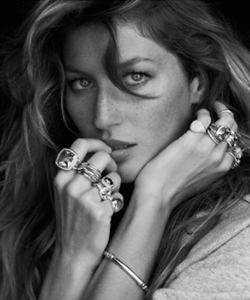 | 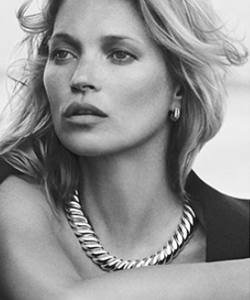 | 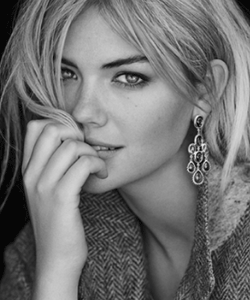 |
| L to R: Gisele Bündchen, Kate Moss, and Kate Upton for David Yurman |
In search of authenticity
The way many brands are looking to win the battle is by going beyond the realms of a conventional endorsement and instead touting the celebrity as having played a hand in the creation of the very products they advocate.
One example from the watch category is that of international adventurer Bear Grylls and Luminox. Grylls helped to create the new Survivalist Series for the brand, adding practical features such as Morse code, a paracord strap, and a dive zone countdown to the designs.
As a hard-wearing watch, Luminox had also previously released watches designed with Icelandic Sea and Air Rescue, and counterterrorism operative/deep-sea diver Scott Cassell.
Phil Edwards, managing director Duraflex Group Australia (DGA), which distributes Luminox, explains, “Celebrity ambassadors play a pivotal role in building brand awareness and promoting new collections. It’s critical to ensure the profile and values of the celebrity are well aligned to the brand in order for the partnership to be authentic and successful. Bear Grylls is the world’s most recognised face of survival and outdoor adventure, having spent his career in the wild, navigating some of the most extreme landscapes on earth and coming out of the most dangerous situations alive and unharmed.
“Luminox watches are known for their ability to perform in extreme situations, making this the perfect partnership.”
He adds, “There is no better watch to be on Bear Grylls’ wrist than a Luminox, especially a Luminox which Grylls helped design and develop.”
Meanwhile, in the jewellery category, we have seen stars such as Angelina Jolie (Robert Procop), and supermodel sisters Bella Hadid (Chrome Hearts) and Gigi Hadid (Messika) work with established brands as ‘guest designers.’ All three collaborations had a distinct air of authenticity. Jolie – a noted philanthropist – and her daughter Zahara created a charity collection with Procop, who is a long-term friend and designed Jolie’s engagement ring.
Bella Hadid is a close friend of the Stark family, who own the Chrome Hearts brand, while Gigi Hadid was introduced to Messika founder Valérie Messika at Paris Fashion Week and found their design philosophies and approach to wearing jewellery were very similar.
Perhaps the most prominent example is Spanish A-lister Penélope Cruz and Atelier Swarovski. Both Cruz and Atelier Swarovski founder Nadja Swarovski have expressed a passion for environmental protection, as well as fine jewellery.
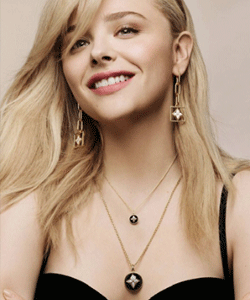 | 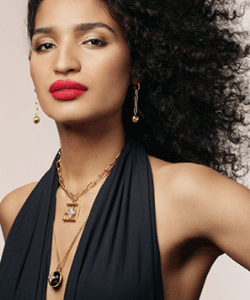 | 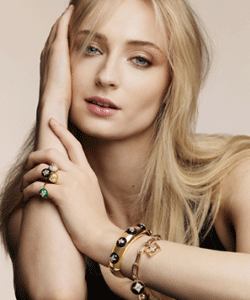 |
| L to R: Chloë Grace Moretz, Indya Moore, and Sophie Turner for Louis Vuitton |
The result was Cruz designing a 14-piece made-to-order collection from responsibly sourced metals and gemstones, as well as some synthetic gemstones and lab-grown diamonds.
The range was later expanded and manufactured in commercial quantities. “Penélope asked us [to collaborate on the range] and that is such an honour, as usually we have to look for partners, but to be working with someone who believes in the cause is amazing,” Swarovski said in 2018.
She added, “It is much better to start with the film crowd as they are environmentally tuned-in, so it was a natural evolution when Penélope came along. [And] these are designed by someone who has been on the red carpet.”
An interesting local example of authentic celebrity endorsement is that of WA-based Linneys. The family-owned jewellery business has chosen a number of West Australian celebrities to promote and model its collections over the years. These have included Ernie Dingo, Melissa George, and Tahnee Atkinson.
Justin Linney, creative director Linneys, tells Jeweller, “Celebrity ambassadors have provided Linneys with a recognisable figure to showcase our latest designs. Showing how the pieces can be worn and enjoyed is the key. Having the celebrity endorsement gives an added level of credibility to the brand as well as assisting with achieving PR [goals] around the campaign.
“We focus on working with Australian ambassadors because that fits well with our brand and key messaging that we utilise in our marketing.”
The retailer has recently shifted to product-based campaigns in order to keep the focus on its jewellery designs, however its most recent celebrity ambassador was model-turned-Survivor Australia contestant David Genat.
Another Australian retailer utilising a celebrity strategy is Larsen Jewellery. It has been the ‘official ring partner’ of Channel 10’s The Bachelor franchise for several years. The Sydney-based brand created an unusual grey spinel ring for Matt Agnew in 2019, a garnet-and-rose-gold commitment ring for Nick ‘Honey Badger’ Cummins in 2018, and a diamond-and-platinum design for Matthew ‘Matty J’ Johnson in 2017.
Larsen Jewellery also created the engagement ring for Johnson and the show’s winner, Laura Byrne, in 2019. The ring was promoted on both Johnson and Byrne’s Instagram accounts; together, the couple boast a combined following of more than 500,000.
Indeed, social media has played an increasingly critical role in the nature of celebrity endorsement over the past decade.
A new sphere of influence
The celebrity ambassador approach to marketing consumer products has enjoyed a long and illustrious term without serious revision. But in response to the questions being asked about consumers’ fatigue with celebrity endorsements, the other phenomenon to have emerged in recent years is that of celebrities espousing product endorsements via social media.
In 2011, US-based marketing platform firm Ad.ly – which called itself the ‘social matchmaker’ – had found a niche working with brands to connect them with the right celebrity ambassadors through digital media.
At the time, Ad.ly CEO Arnie Gullov-Singh said, “[We are] tapping the $50 billion spend on endorsements worldwide as well as the $35 billion spent in digital advertising. If people are the new publishers, then people are also the future of advertising, and celebrities are the new ‘prime time’.”
Ad.ly’s ‘Consumer Influence Index’ sought to determine which celebrities drove the most consumer traffic to advertisers’ websites in the US; in 2011, the top 10 featured Kim, Khloé and Kourtney Kardashian, TV personality Lauren Conrad, and rapper and presenter Snoop Dogg.
Since then, the social media landscape has rapidly evolved – and many watch and jewellery brands have adapted their marketing tactics to take advantage of its influence over consumer purchasing.
While employing a number of well-known celebrities in its traditional marketing, including Elle Fanning, Lupita Nyong’o and Kendall Jenner, Tiffany & Co. has also created online-only social media campaigns with younger and more digitally-oriented stars, such as dancer Maddie Ziegler and actress Yara Shahidi.
Notably, the brand also created a campaign with male luxury travel influencer Jack Morris, who posts under the Instagram handle @doyoutravel and has 2.7 million followers. Morris promoted the more affordable Tiffany & Co. items, usually around $US250.
David Yurman – a US jewellery brand which once garnered headlines for its use of A-list celebrity models such as Kate Moss and Gisele Bündchen – began pursuing an influencer strategy several years ago. One of its most successful campaigns was with Blair Eadie, founder of fashion blog Atlantic Pacific and Instagram account @blaireadiebee, which has 1.6 million followers.
Over several years, Eadie incorporated David Yurman pieces into her popular outfit posts and showed consumers how to style them, as well as interacting and answering product questions. David Yurman was able to repurpose Eadie’s content for its social media channels.
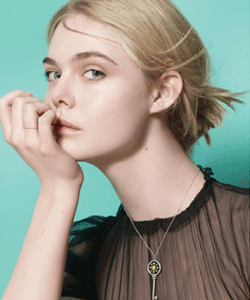 | 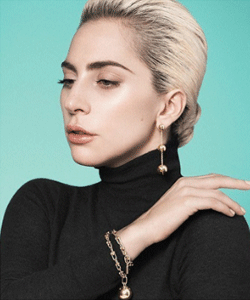 | 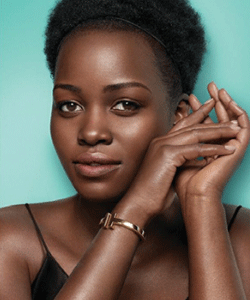 |
| L to R: Elle Fanning, Lady Gaga, and Lupita Nyong’o for Tiffany & Co. |
However, William Comcowich, founder and CEO of Glean.info By Cyberalert and a Jeweller contributor, explains, “It may be tempting to bundle celebrities like Kim Kardashian, Justin Bieber and Taylor Swift in the same category as lesser-known social media influencers. But the two groups are different, even if both have plenty of followers.
“Celebrity endorsements and sponsored influencer content have similarities and may overlap at times, but the two strategies entail different advantages and disadvantages. It’s crucial to understand those differences to develop effective PR or social media marketing campaigns.”
Comcowich says that while celebrities can deliver “substantial reach and boost brand awareness” as well as increasing ‘earned media’ – that is, generating unpaid media coverage – influencers offer more niche appeal, credibility, expertise, and higher engagement with consumers. Combined, these can generate higher click-through rates and increased sales.
“Celebrity endorsements on social media are more akin to traditional television advertising than influencer marketing… Seeing the #ad or #sponsored hashtag, followers generally understand that they’re viewing a sponsored endorsement. They consider the celebrity as a conduit for the brand’s message,” he explains.
“On the other hand, top-notch influencers who specialise in a niche answer questions from followers and communicate with them in a back-and-forth exchange.”
Additionally, influencers are often able to create original content which brands can then re-share, and are often less expensive to hire than celebrities. An example of a hybrid approach to celebrity endorsement is Thomas Sabo’s signing of British pop star Rita Ora as its global ‘face’ in 2019. Ora – who is also a presenter, actress, and model – boasts 16.1 million followers on Instagram alone.
Not only does Ora appear on in-store signage and other materials across international markets, but also promotes the brand online using a designated hashtag.
Thomas Sabo is also distributed by DGA, with Edwards explaining, “Rita Ora’s self-confident appearance, her authenticity and passion for realising her own dreams make her a trendsetter in a global community – characteristics that perfectly underline the vision of Thomas Sabo jewellery.
“By working with Rita Ora, Thomas Sabo wanted to address target groups of all ages and underline the international orientation of the brand. The campaign with Rita Ora focuses on jewellery as a powerful companion and expression of one’s own personality.”
Thomas Sabo also uses other social media influencers, who create local content for different markets.
Perhaps that is the biggest lesson brands can take from the evolution of the brand ambassador model. Simply luring the highest-profile star you can find to provide an endorsement for your product is no longer enough to strengthen your brand.
There is a clear indication that well thought out celebrity-brand matchmaking requires both local and global power, and the ability of the star to create trust and connection with their audience – particularly through social media.
Without a natural association between ambassador and product, consumers are more likely to be left confused and cynical rather than star-struck and invigorated with positive purchase intent. Simply put: if the face doesn’t fit, consumers won’t wear it.
Hover over eMag and click cloud to download eMag PDF
FRONT COVER: Timelessly beautiful, Coeur de Lion marries clear, minimalist design with unusual colour combinations to create jewellery that is both beautiful and uncoventional.
PREVIOUS ISSUES